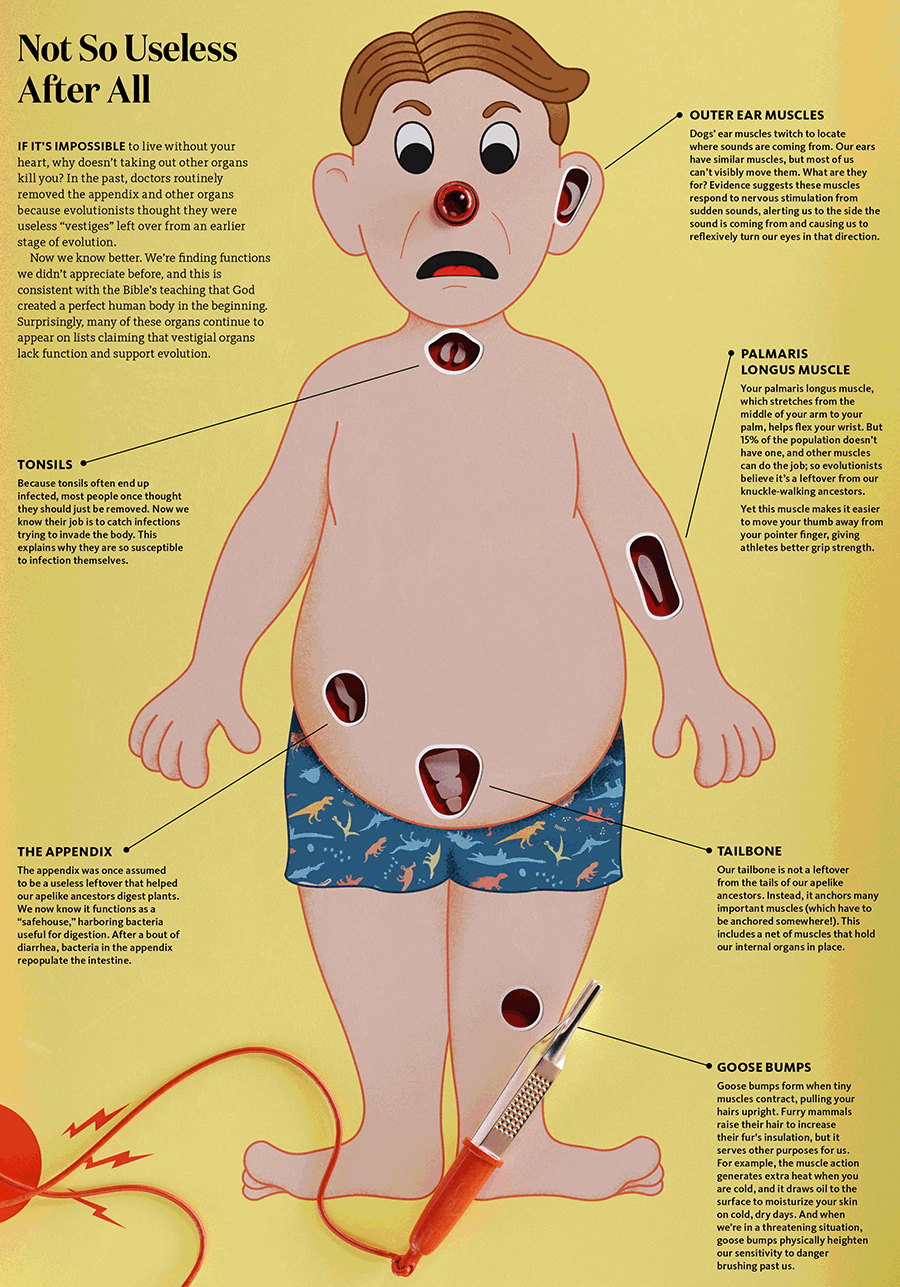Not So Useless After All
If it’s impossible to live without your heart, why doesn’t taking out other organs kill you? In the past, doctors routinely removed the appendix and other organs because evolutionists thought they were useless “vestiges” left over from an earlier stage of evolution.
Now we know better. We’re finding functions we didn’t appreciate before, and this is consistent with the Bible's teaching that God created a perfect human body in the beginning. Surprisingly, many of these organs continue to appear on lists claiming that vestigial organs lack function and support evolution.
Tonsils
Because tonsils often end up infected, most people once thought they should just be removed. Now we know their job is to catch infections trying to invade the body. This explains why they are so susceptible to infection themselves.
The Appendix
The appendix was once assumed to be a useless leftover that helped our apelike ancestors digest plants. We now know it functions as a “safehouse,” harboring bacteria useful for digestion. After a bout of diarrhea, bacteria in the appendix repopulate the intestine.
Outer Ear Muscles
Dogs’ ear muscles twitch to locate where sounds are coming from. Our ears have similar muscles, but most of us can’t visibly move them. What are they for? Evidence suggests these muscles respond to nervous stimulation from sudden sounds, alerting us to the side the sound is coming from and causing us to reflexively turn our eyes in that direction.
Palmaris Longus Muscle
Your palmaris longus muscle, which stretches from the middle of your arm to your palm, helps flex your wrist. But 15% of the population doesn’t have one, and other muscles can do the job; so evolutionists believe it’s a leftover from our knuckle-walking ancestors. Yet this muscle makes it easier to move your thumb away from your pointer finger, giving athletes better grip strength.
Tailbone
Our tailbone is not a leftover from the tails of our apelike ancestors. Instead, it anchors many important muscles (which have to be anchored somewhere!). This includes a net of muscles that hold our internal organs in place.
Goose Bumps
Goose bumps form when tiny muscles contract, pulling your hairs upright. Furry mammals raise their hair to increase their fur’s insulation, but goose bumps serve other purposes for us. For example, the muscle action generates extra heat when you are cold, and it draws oil to the surface to moisturize your skin on cold, dry days. And when we’re in a threatening situation, goose bumps physically heighten our sensitivity to danger brushing past us.
This article was taken from Answers magazine, March–April, 2018, pp. 22–23.
- © 2025 Answers in Genesis
- Privacy Policy
- Contact
- About

